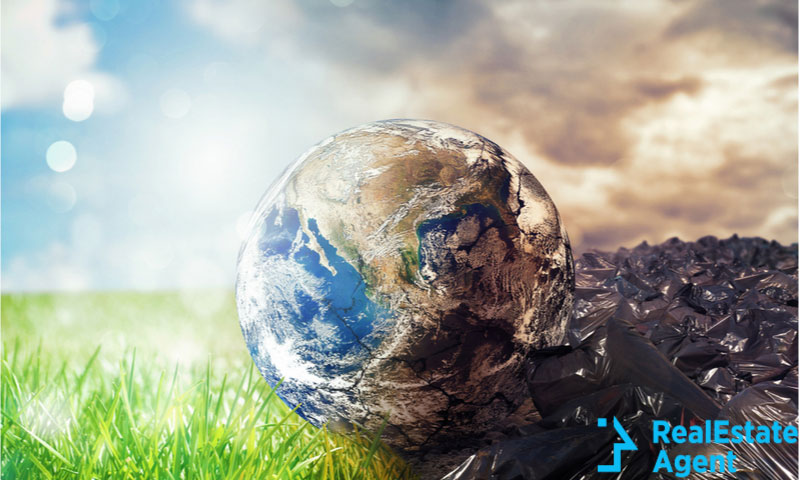We all want to be able to enjoy the outdoors and breath clean air whenever we go outside. That’s how we choose where we live, where we go on vacations and even where we work if you are concerned about the company’s carbon footprint. We all want a place free of pollution for both health reasons as well as esthetics. I don’t know about you but I’d rather not choke on smog as I walk downtown, nor do I like to see plastic bags or other kinds of trash when I walk through a park or a forest. There are basic things that we can all do to have a local impact on pollution in our community like recycling, not littering, buying local and promoting clean products, but the bigger issues aren’t easily affected by everyday people.
There are countries that face serious problems when it comes to pollution and even if every single person in those countries did the basic things to impact their local communities, the effect would not be felt as littering isn’t the major reason behind pollution.
Is pollution our way of life?

There are many pollutants that have a major impact on the quality of the air we breathe even in our homes and also in the soil where we plant our crops. These pollutants are the industries with the biggest revenues which is the main reason why fighting pollution is such a problematic issue. These conglomerates don’t want to stop making money even if it kills our environment.
Biggest polluters by industry
The biggest problem is that our quality of life is at risk from our way of life. The gas for our cars, the food on our plates, our clothes, our homes and Instagram posts are responsible for the increase in pollution worldwide. Carbon dioxide (CO2) is the waste product of most of the things we do, even breathing, but let’s see these industries as breathing is a very small problem compared to what they’re doing and, more importantly, what we allow them to do.
1. Fuel industry

The most polluting industry is also the most used, by everyone. The fuel industry fuels our cars as well as our homes through energy and energy consumption has never been bigger throughout our history. The numbers and levels of consumption are astronomical and as the world population increases those numbers will only grow. Everything in our daily lives is impacted by energy. Think of your phone charger, your bottle of water, your flight to that exotic destination or your workplace. Absolutely everything uses energy or fuel and the growth rate is terrifying. A few facts to prove this point. In 2006 the daily oil consumption was 85 million barrels per day. In 2019 that number reached 100.3 million barrels per day.
The things that we can do aren’t science fiction anymore. There are countless options for renewable energy and plastic should be already something to put in museums, not in our daily life. Fun fact, a plastic exhibit would outlive the museum it’s placed in.
2. Agriculture

With a growing global population, there is also a growing need for food. While meat and dairy products are present in our daily lives, the growing need for food is larger than what the planet can currently handle. Meat farms actually produce 13-18% of the greenhouse emission worldwide and around 65% of these emissions come from cows alone. Aside from those meat farms, there’s also deforestation that limits the planet’s ability to fight CO2 emissions. When deforestation is done through burning down forest or land for agricultural purposes it hits the planet twice. This happens when the trees burn and emit more CO2 into the atmosphere and when the tree is no longer there to absorb the CO2.
In order to affect this industry, we can go vegan and if all of America went vegan then there would be a 28% decrease in greenhouse gas emissions from agriculture. If giving up on eating meat is not a viable option for you, at least eat locally grown, organic produce.
3. Fashion industry

The debate on whether the clothing industry is harmful to the environment and exactly how harmful it is has been quite controversial. A few years ago the fashion industry was mentioned as the second biggest pollutant and that sparked a few heated arguments from both sides. The truth of the matter is that fast fashion, the kind that is made from cheap materials and is often produced in Asian countries is at fault. But the fashion industry still is responsible for 10% of the carbon emissions in the atmosphere and around 85% gets dumped every year just because people want to keep up with the ever-changing trends.
If you want to help limit this pollution you can look into second-hand or charity shops, renting clothes is another option particularly for special events and not giving in to the ever-changing fashion trends. Why buy something that you’ll wear for one season, at best, when you can skim through what’s available for more versatile options?
4. Food retail

Here we’ll look at supermarkets as well as food wasting. You’ve probably seen on social media those posts regarding peeled oranges in plastic containers or uncracked eggs in plastic bags. That’s the reality we’re dealing with. I won’t give in to rage and question why would you sell a peeled orange in plastic containers but I’ll share with you what Iceland did. Do you know how toothpaste comes in a cardboard box? Well, Iceland, being the least polluted country, changed this. If you go to Iceland you might still find some options for toothpaste that come in boxes, but the large majority is boxless. This happened in Iceland because Icelanders just stopped buying toothpaste that came in a box.
This was done by everyday people and this is a way in which you can impact your environment. Stop using plastic bags for every apple that you buy and just try to eliminate any use of plastic from your cooking or eating. Also, in order to limit waste don’t purchase more than you actually need. This works for food, furniture and clothes as well.
Top 10 most polluted countries in the world

Now let’s see where pollution impacts the quality of life more. The following countries barely manage to get out of the top 10 most polluted countries in the world for several years. The ranks may change but rarely do other countries manage to surpass those listed below. The pollution has been measured by PM2.5 (fine particles of matter 2.5). These are droplets or small particles that contaminate the air which can come from car exhaust, burning of fossil fuels and even smoking.
| Rank | Country | PM2.5 | Population |
| 1 | Bangladesh | 83.3 | 164,689,383 |
| 2 | Pakistan | 65.81 | 220,892,340 |
| 3 | Mongolia | 62 | 3,278,290 |
| 4 | Afghanistan | 58.8 | 38,928,346 |
| 5 | India | 58.08 | 1,380,004,385 |
| 6 | Indonesia | 57.71 | 273,523,615 |
| 7 | Bahrain | 46.8 | 1,701,575 |
| 8 | Nepal | 46.46 | 29,136,808 |
| 9 | Uzbekistan | 41.20 | 33,469,203 |
| 10 | Iraq | 39.60 | 40,222,493 |
Bangladesh is leading the top 10 most polluted countries in the world as its brickmaking industry functions through the burning of wood or coal which generate large amounts of dust and smoke. This industry is growing as there is a constantly increasing need for bricks worldwide and if measures aren’t taken, the situation is only going to get worse.
Pakistan is dealing with several pollutants besides the brick-making industry. The country is battling with an increasing number of vehicles on roads, continuous deforestations as well as the burning of garbage as a means to get rid of it.
India, as the second-most populous country is dealing with pollution from vehicles, forest fires, dust storms and the burning of coal and wood. The air pollution can get so bad there that flights are cancelled, schools are closed and the white marble on the Taj Mahal turns green. Around 600 patients are brought in every month at Kanpur’s medical college with respiratory illnesses, Kanpur is the most polluted city worldwide.
As pollution is more frequently talked about we finally begin to see countries taking a stand and starting to invest in eco-friendly alternatives for fuel and even passive houses in order to prevent further damage from being done to the planet. These renewable energy sources are available and can be used: solar energy through solar panels, wind energy through wind turbines, hydropower through flowing water, geothermal energy through underground heat. All these are valid options for fossil fuels as they don’t generate carbon dioxide to be created and they should be implemented worldwide. There is sun, wind, water or underground heat everywhere in the world so everything else is an excuse. But even more can be done.
Standing against pollution

There are countries leading climate change that don’t only limit their pollution of the environment but also seek ways to decrease it. There are innovations happening every day and one such innovation is Carbon Engineering. Countries are literally in a NASCAR race trying to get to the finish line faster.
Countries leading in climate change
Currently studied in Canada at the University of Calgary and Carnegie Mellon University there is a Direct Air Capture system that proved capable of removing CO2 out of the atmosphere. Once that CO2 is captured their Air to Fuel technology can produce synthetic fuels from that CO2. Like that you don’t only clean the air but also make eco-friendly fuel from the bad air in our atmosphere.

Another variant is being developed in France with the same end goal, to capture CO2 from the air and turn it into green energy. They built a carbon well that captures CO2 through microalgae when photosynthesis happens. As it grows, this algae releases biogas through a biological process called methanogenesis, from which they recover biomethane, an energy carrier that can replace fossil fuels.
Some of these options still seem taken from a futuristic movie, but there actually is a greenhouse in Zurich, Switzerland that grows plants using a technology that creates no pollution. Even more, it diminishes pollution by using CO2 from the atmosphere to increase the plants’ photosynthesis. They capture CO2 and feed it to the plants which make the plants grow faster, ripen faster and use more CO2. The company Climeworks aims to extract 900 tonnes of CO2 every year. Their end goal is to capture CO2 and turn into a reusable energy source.
Another such technology is the artificial leaf developed at Harvard University in America. A small and plain computer chip that aims to turn sunlight into liquid fuel. In nature, you have sunlight, water, CO2 and fuel, but the simple leaf is the one that can connect the dots. The artificial leaf would be placed in water under sunlight where the leaf will use solar energy to split water into oxygen and hydrogen. The oxygen is released and the hydrogen with the CO2 from the atmosphere is delivered to bacteria that are present in soil and water. This bacteria will turn hydrogen and CO2 into alcohols (methanol and ethanol) which will result in fuel.

But the Netherlands have already created it’s first pilot green electricity roof in the world. The plants live on solar energy and through photosynthesis, the plants take carbon dioxide and produce organic matter like oxygen, the thing we breathe. Other organic matters seep into the soil and are picked up by naturally occurring bacteria from water or soil that break it down. Like this electron and protons are produced as a waste product of the whole process. By simply placing an anode electrode (the positive part of a normal battery) these can be harvested for energy. This technology uses plants that grow in water on top of buildings to create energy and it’s completely waste-free. All these plants need to produce energy is light, carbon dioxide and water. Like this, the Netherlanders managed to capture the naturally occurring energy from plants.
Which country has the cleanest air?

While countries leading in climate change are discovering new ways to not only diminish but also decrease it, there are those who implement ways to limit pollution in ways that have a major impact on the air quality. There are a few contestants for the lead in the fight for which country has the cleaner air like The Bahamas, Finland and Australia that can be mentioned. Finland with its amazing public transport that aims to have no cars by 2025 or environmental protections in industries.
The air quality is measured in PM2.5 particles present in microgram measures in a cubic meter (µg/m³). The countries with a higher µg/m³ number deal with higher levels of pollution in the air. The data that we are following is the current 2020 quantities of PM2.5 in µg/m³ as it can be seen on IQAir.com the site that keeps count of the world air quality index.
Iceland: the least polluted country in the world.

The reason for this is the fact that Iceland has implemented several technologies for alternative energy long before other countries even began to consider it. The result is 5.55 µg/m³ PM2.5 with a population of 341,243. With eco-friendly geothermal energy the country managed to keep water pollution to very low levels and what little air pollution exists is dissipated by the strong winds. Some say that the water in Iceland is so clean that you can drink it straight from the streams.
Clean air in the U.S.

The United States of America is ranked at nr. 10 currently on the IQAir’s scale with 9.04 µg/m³ PM2.5. The improvement has been steady ever since the 1970 Clean Air Act. It can be seen in the µg/m³ PM2.5 measured in 2003 at 13.2 and dropping to 8.4 by 2019 and pollution dropped even further with the shut down of coal plants throughout 2019. With 3D printing technology America is also looking into 3D Printed Houses as a way to improve our way of life. There are still many measures that need to be taken as the “State of the Air” report from 2019 noted that there are still 20.8 million people who live in areas with unhealthy air quality.

The cleanest air in the U.S. can be found in Hawaii in the cities of Honolulu and Kahului-Wailuku-Lahaina which are ranked first and fourth cleanest areas in the country. Honolulu is also leading the American Lung Association’s list for cleanest cities. But exactly what makes Honolulu’s air so clean? If you think about it, there are no manufacturing conglomerates operating on the islands and it is also an island. Similar to Iceland, the pollution that comes from cars or households is taken by the strong Pacific winds. The frequent rainfall also helps in keeping the air clean of pollutants.
So what can we do?

Climate change is as real as taxes and pretending that it’s not will end with us not fleeing from the IRS, but fleeing from toxic air and waste and polluted water. We have the technology to make this change and every seemingly science fiction option can be implemented. Some may say that the technology isn’t ready. Well … 30 years ago you needed a whole room to fit what fits now in your mobile phone so that argument is kinda outdated, to say the least. We can do this as several countries are proving it already.
We, however, need to do this globally as air circulates and because of that, you get dust blown from Sahara in Europe. There are non-governmental organizations that take a stand by implementing ways in which to reduce carbon footprint and you can also enquire in your local community. If they didn’t take real steps to impact climate change, you can also take a stand.








